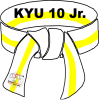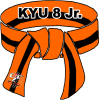Which PvP Class Should You Play for WOTLK Classic WoW Arena of PvP Tier List - WOTLK News
Welcome to the Ultimate Wrath of WoW Classic SoD Gold the Lich King PvP guide to picking.
What is the most powerful Arena PvP Class in Wrath Classic WoW?
This guide will cover each speck and sharing my personal view and experience with this particular speck in arenas, as well as battlegrounds that will have ups and downs however, arenas are most importantly, especially to be two, and three theories. After this video, I'll include the tear-list for each specialization and what it means to be three or two arenas.
It is one of the many notable things coming from TBC. To wrath oneself in Lich King arena is the massive amount of healing that is available in Wrath of Lich King, they gain so many new spells that just dramatically increase their healing capacity.
To combat this, you either have to carry a Mortal Strike of some kind such as an aim shot or wound poison or Mortal Strike some sort of healing reduction, or crowd control CC in order to cover that healing reduction. You may not notice this at first, in the beginning of the season, but as wrath continues to get more intense, you'll notice how insane healers are and you'll notice how much harder they'll be able to kill targets.
The first class we'll begin with is the warrior. Three specs are available to Cheap WoW Classic SoD Gold them. they have to file specs including arms warrior and protection warrior. There's also a revenge spec where you've talked about it in the future. They are a different breed of warrior than they were from TBC into wrath of Lich King. The majority of your time in battle posture now due to the fact that it increases the armor's penetration....
Which PvP Class Should You Play for WOTLK Classic
- ·
- April 16, 2024 1:00 am

 Add New Blog
Add New Blog





















